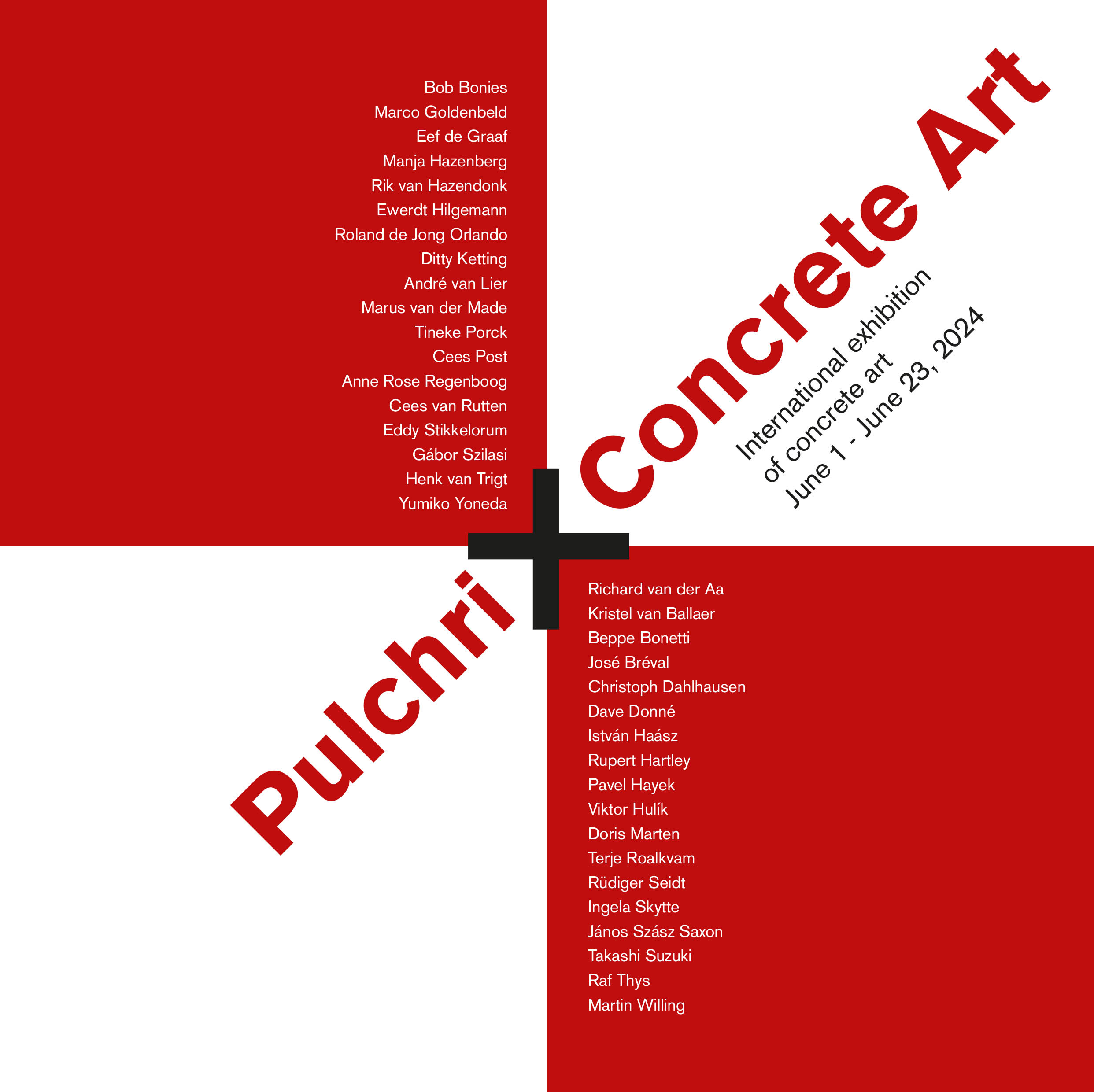

Following the successful 2021 exhibition of sculptures ‘Voorhout Monumentaal’, architect and artist André van Lier has ventured into a new project. Together with artist Bob Bonies (as advisor), he initiated the exhibition ‘Pulchri Concrete Art’, in which 36 Dutch and international artists will participate. This exhibition will take up all first floor exhibition rooms of Pulchri Studio and will present paintings, sculptures and installations, all of those contemporary concrete art. This art movement was created about a hundred years ago, by Theo van Doesburg en Piet Mondriaan when starting ‘De Stijl’. The aim was and still is, to create works that do not refer to any form of the natural word, but instead create their own ‘concrete’ reality.
The works of the participating artists are very diverse, but their common ground is clearly visible. Bob Bonies explains: “The works by Van Doesburg and my works operate in the same sphere of interest, but when hanging next to one another, you would see vast differences. This applies to the artists of this exhibition as well. They are all familiar with the evolutions in this movement, starting in 1914 with the Russian avant-garde artists, then Bauhaus and De Stijl, but they all developed their own style and interpretations. This can be perceived in The Hague and internationally, but the roots of concrete art do happen to be in this city. The exhibited works In Pulchri are all contemporary, made by living and working artists. They have selected the works themselves, so there is no screening influence of a curator”. This is confirmed by Van Lier: “Yes, this truly is an artist’s initiative”.
Bonies: “There are also new and young artists participating. I’m happy to see there is a new generation developing in concrete art. They are interested is this art movement; graduates from the academy regularly visit my studio. This exhibition could be an incentive to them to further explore this art form. Concrete art is but a slice of a big cake, but a delicious one!”
Participating artists (listed below) are members of Pulchri and artists from abroad.
Bob Bonies, Marco Goldenbeld, Eef de Graaf, Manja Hazenberg, Rik van Hazendonk, Ewerdt Hilgemann, Roland de Jong Orlando, Ditty Ketting, André van Lier, Marus van der Made, Tineke Porck, Cees Post, Anne Rose Regenboog, Cees van Rutten, Eddy Stikkelorum, Gábor Szilasi, Henk van Trigt, Yumiko Yoneda, Richard van der Aa (FR), Kristel van Ballaer (BE), Beppe Bonetti (IT), José Bréval (FR), Christoph Dahlhausen (DE), Dave Donné (BE), István Haász (HU), Rupert Hartley (GB), Pavel Hayek (CZ), Viktor Hulík (SK), Doris Marten (DE), Terje Roalkvam (NO), Rüdiger Seidt (DE), Ingela Skytte (DK), János Szász Saxon(HU), Takashi Suzuki (JP), Raf Thys (BE), Martin Willing (DE).
Margreet Hofland
For this exhibition the brochure ‘Pulchri Concrete Art’ will be published, designed by Cees van Rutten.
The exhibition can be visited from 1 to 23 June 2024.
Opening: Saturday 1 June 2024 at 17:00 by Piet Augustijn, former curator of contemporary art at Gorcums Museum, Gorinchem.
The exhibition will be closed on 4 and 21 June due to a private meeting.
Pulchri Studio, Lange Voorhout 15, 2514 EA The Hague, 070 346 1735,| www.pulchri.nl, Open Tue-Sun 12-5pm.
István Haász (HU)
www.istvanhaasz.art
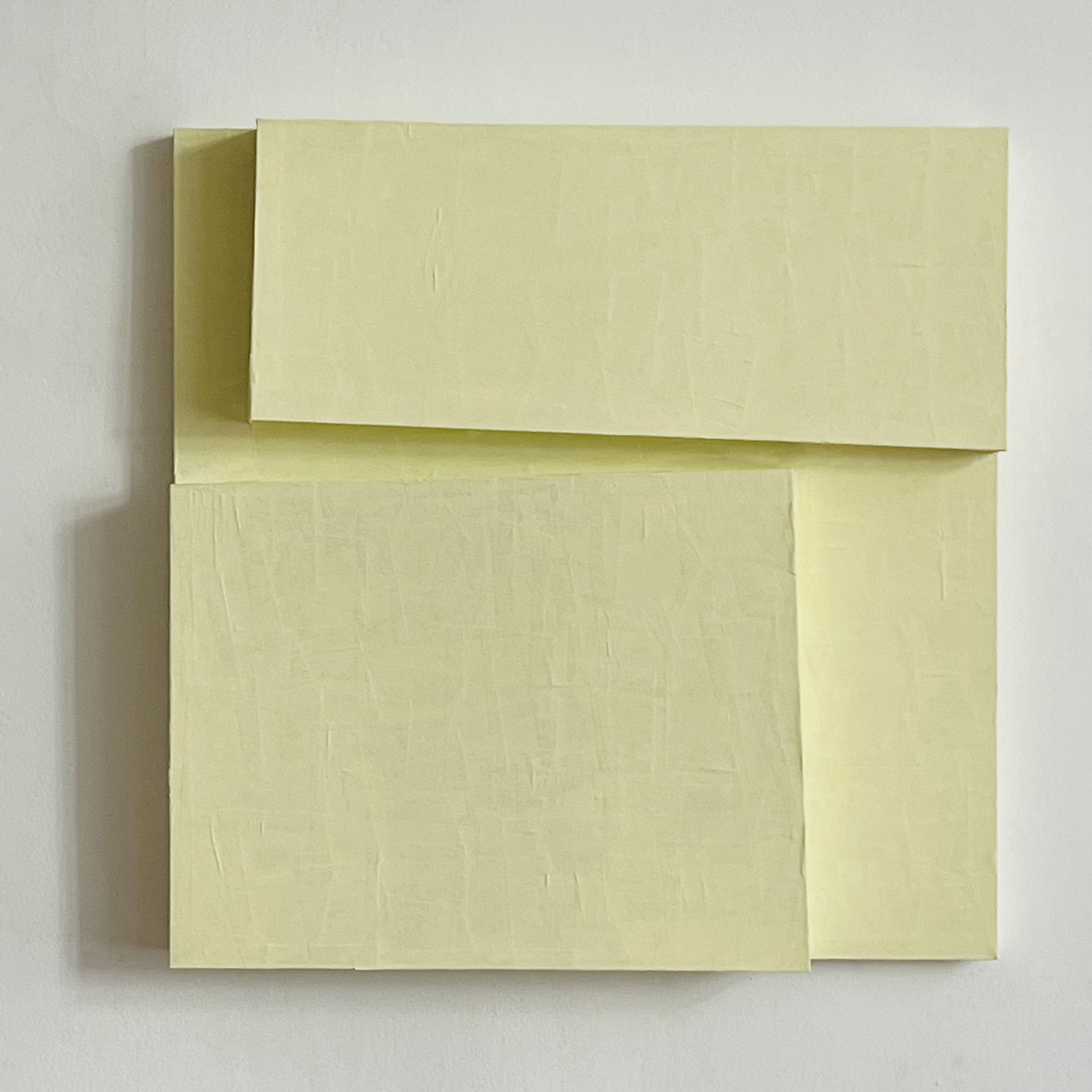
Object (Roman stones) I.
60 x 60 x 10 cm
wood, Finnish cardboard, acrylic
2024
Richard van der Aa (FR)
www.richardvanderaa.com
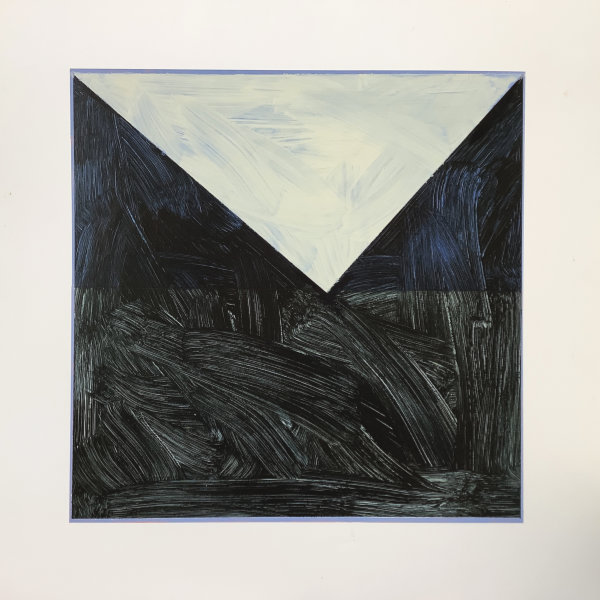
Otira Gorge - After van der Velden
50 x 50 cm.
acrylic on paper
2023
Martin Willing (DE)
www.martinwilling.de
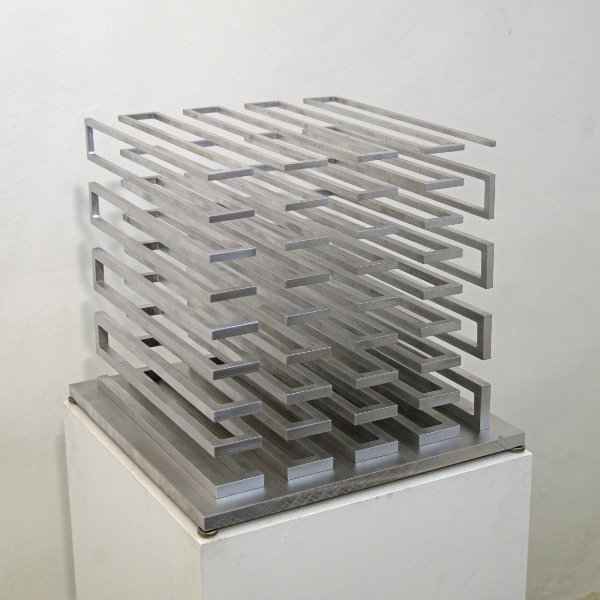
2022 Conical rod, meandering and stacked to form a cube
35 x 33 x 33 cm
Duralumin, milled, welded, prestressed
2022
Cees Post
www.haagsekunstenaars.nl/cv/79787
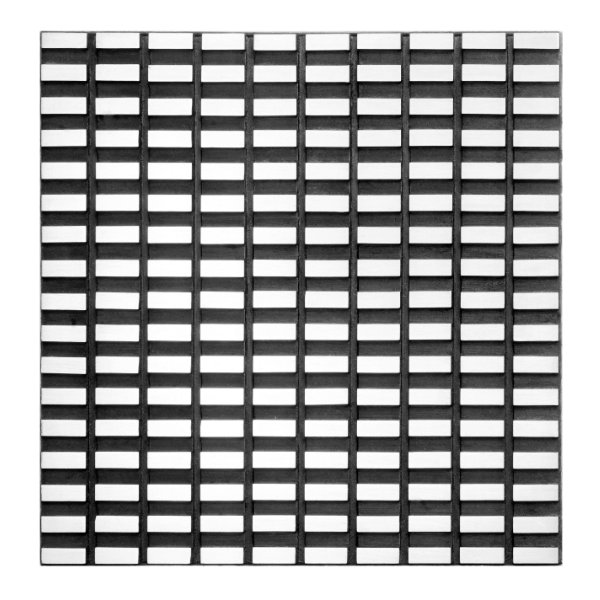
Brooch-object 2020-K-3
82,5 x 82,5 mm
sterling silver, pin remanium
2020
Foto: Fotostudio Anton van der Riet, Den Haag
Takashi Suzuki (JP)
www.takashisuzuki.com
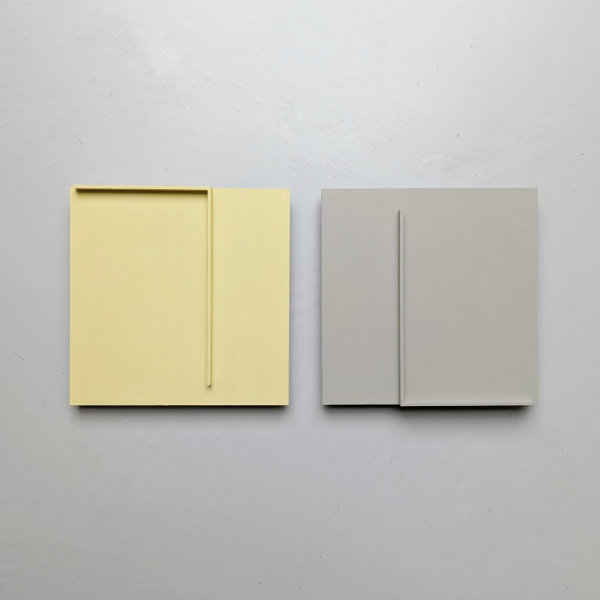
TS2106, 2021
20 x 43 x 2,5 cm
acrylic and gesso on wood and panel
2021
Eddy Stikkelorum
www.stikkelorum.nl
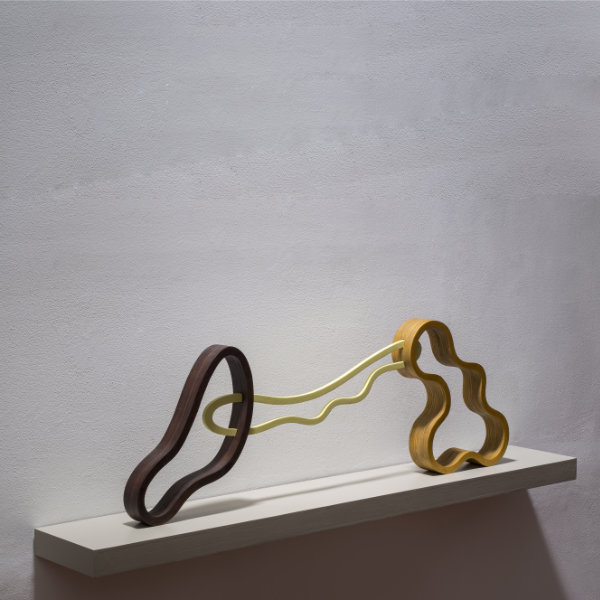
Without You, there will be Hope
ca.100 x 34 x 6 cm.
sculpture on wall shelf made of colored and lacquered plywood
2023
Ewerdt Hilgemann
www.hilgemann.nl
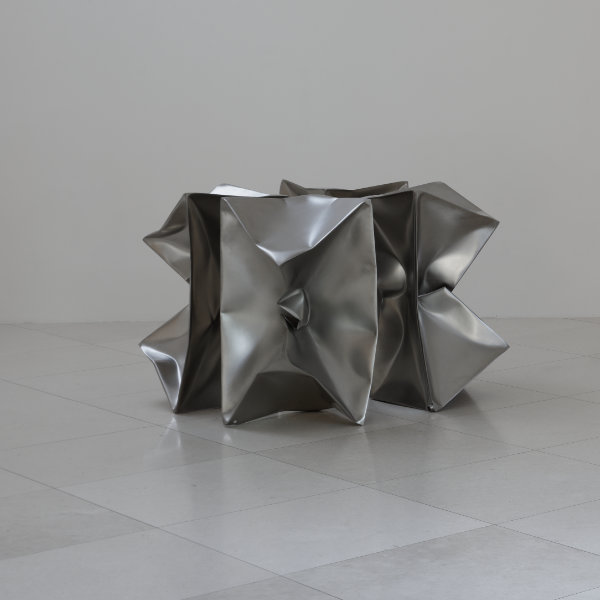
Four Parts of a Cube, 2002, #020301-4 ref. WX1387
4 parts, each 100 x 50 x 50 cm
stainless steel
2002
Kristel van Ballaer (BE)
www.kristelvanballaer.be
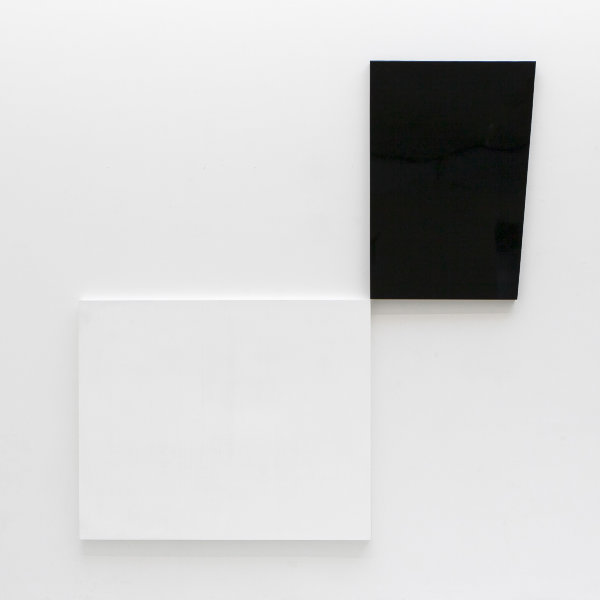
Black and White Areas
244 x 233 cm, 2 segments
1K highe gloss and oil paint on wood
2020
Marco Goldenbeld
www.marcogoldenbeld.nl
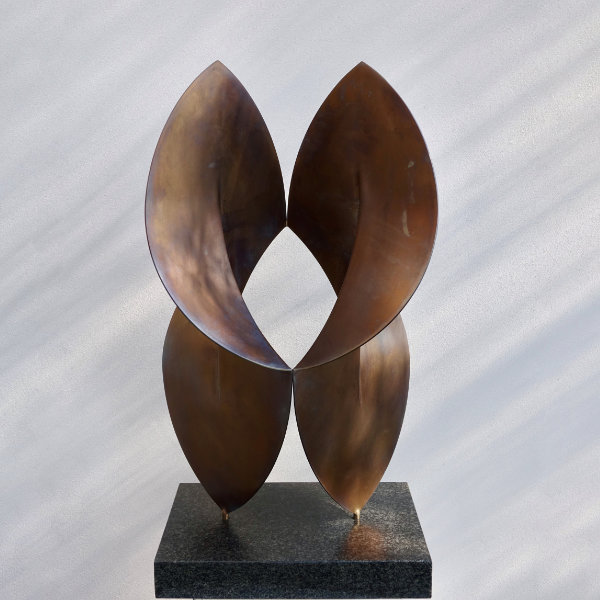
Standing Oval
80 x 42 x 30 cm. Pedestal 115 cm 3 mm
stainless steel, burned by torch
2024
Terje Roalkvam (NO)
www.terjeroalkvam.blogspot.com
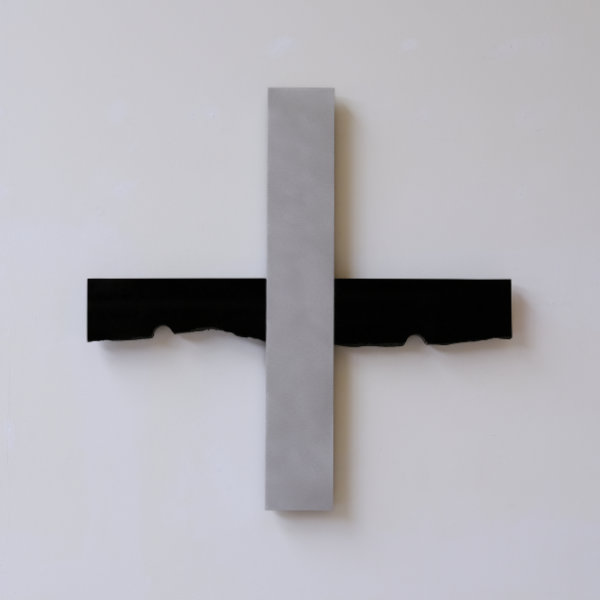
Wall Object “Plus/Minus I-XIV”
75 x 75 x 3 cm
Stone and aluminium
2014
Rik van Hazendonk
www.rikvanhazendonk.com
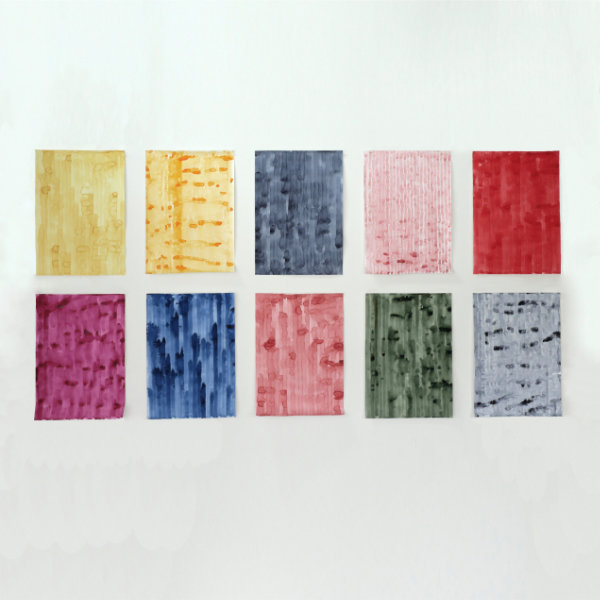
All in One – One in All 2023-I
W x H: 250 cm x 127 cm
watercolor on paper
2023
Doris Marten (DE)
www.dorismarten.com
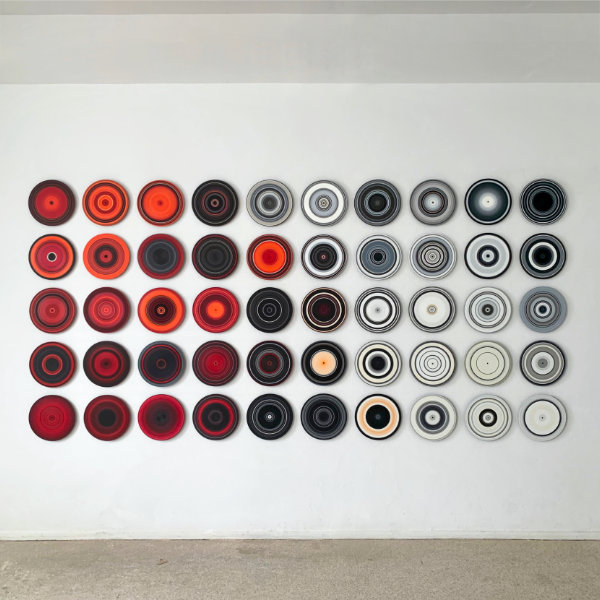
SOUND AND VISION (Every Me and Every You)
170 x 345 cm, 50 parts, each Ø 30cm
oil on vinyl
2022
Ingela Skytte (DK)
www.ingelaskytte.dk
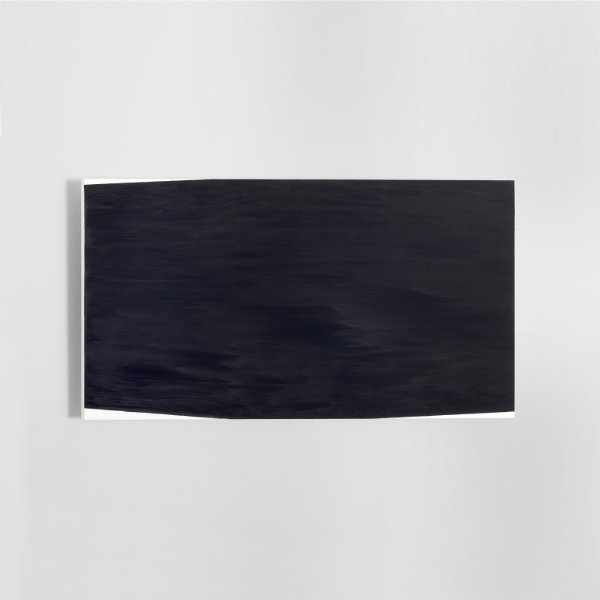
SHARING FIELDS, Cross, black on black, 39”
40 x 80 cm
acrylic on MDF
2021
Yumiko Yoneda
www.yumikoyoneda.com
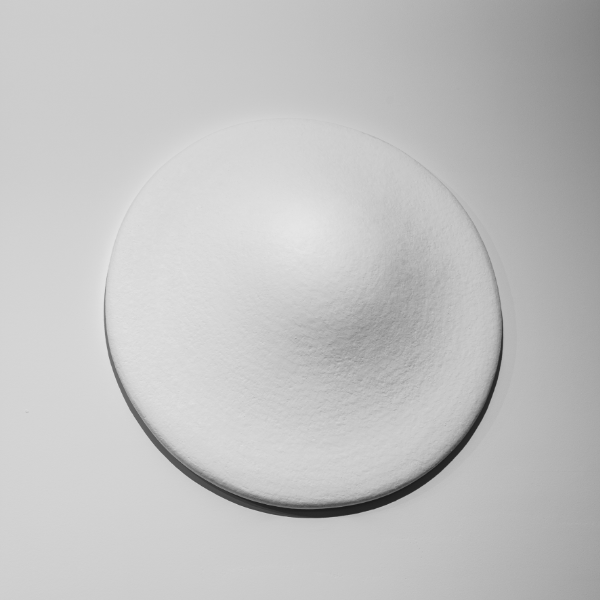
Growth 11220
Ø 85 x1 8 cm
modelling clay, plaster, polystyrene
2020
Foto: Eric de Vries, Den Haag
Christoph Dahlhausen (DE)
www.christoph-dahlhausen.de
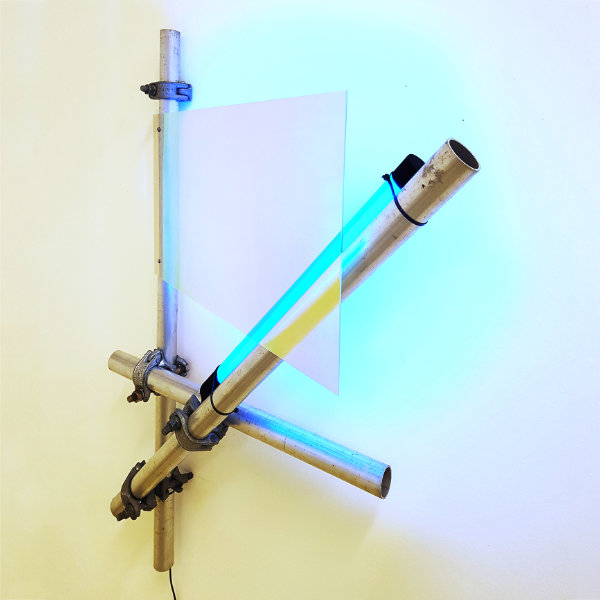
Reflecting Light and Space
100 x 95 x 38 cm
aluminium tubes, steel, LED tube, cablebinders
2022
In constructivism, which emerged in Russia in the early 20th century, geometric shapes were combined into compositions, while the artists consciously refrained from explanation and especially from subjective expression. The composition of the elements and their relationship to each other and surrounding space, were crucial in this art movement. The constructivist ideas, that focused on the measurable, the practical and the purely objective, developed into an art movement with different interpretations all over the world, especially in Europe (Bauhaus, The Style) and America. In the Netherlands, initially a style evolved that advocated a strictly systematic approach. This was succeeded, after a short period of decline, by a variety of interpretations. Many artists of De Stijl, later followed by individual artists, used a geometric design language which, also in reaction to the fierce art of the expressionist COBRA movement, flourished in the 1960s and 1970s. The artist's personality and distinctive personal style had to be eliminated in order to create art as objective as possible. In many cases however, making number and measure visible was perceived as dogmatic and restrictive, so in the decades after this movement’s heyday a more individual, subjective concrete art evolved, which captivates artists to this day. This is especially so in the Netherlands, Germany, Hungary and, with a slightly more light-hearted variant, in France.
The Dutch artist, architect and art theorist Theo van Doesburg (1883-1931) published his six point manifesto on concrete art in 1930. In this he stated among other things : ’Concrete art is universal art and must be the product of the artist's conscious and rational mind only’. Van Doesburg indicated in his manifesto that concrete art must in no way depict visual symbols or ideas from the natural world, but has to arise exclusively from the mind of the artist, finding meaning only in its own material form. It must be created conceptually, with pure shapes and colours only, arranged in premeditated order. These days, concrete art has become synonymous with abstract geometric art.
So, concrete art is created according to given rules and principles. It is made by artists who use fixed measurements and distancing of elements, arranged in a certain order or repetition – and this confined in advance by terms and conditions (usually decided upon by the artist him or herself), that determine the appearance of the artwork.
In my view, concrete or geometric-abstract art (also known as systematic art) still, or again, taking hold of artists in the Netherlands, has to do with the Calvinist nature of this country. Order, system, method, principle and primary colours, they all fit in nicely. Just like the straight ditches and canals and the rectangular meadows and fields with corn, beets and bulbs fit in. If only the mind (ratio) manifested itself, this would yield rather cold and calculated works of art. By also allowing feelings (emotion) in, a dimension is added; in some cases this has resulted in organic geometric abstraction. By mixing colours, subjective brushwork, less strict elementary shapes, intuitive choices or referring to reality (a shadow taking on a geometric shape, a blue plane as the sky, colours referring to nature or ordering principles based on laws of nature), a new, completely individual art was created. A more inspirited art, in which feeling and intuition are stronger than ratio and principles of form.
At present, with new generations of artists, different trends can be observed in concrete art. Although the strict ratio doctrine (exact proportions and primary colours that do not represent an emotion or expression) has not been abandoned, it is often accused of being dogmatic. The school of concrete art where intuition is the guiding principle, is more diverse. Although the system is still identifiable in most works, severity has been abandoned and poetry and warmth are significant characteristics. Personal preferences prevail, the neutral point of view has been replaced by the individual statement. Contemporary artists do not feel bound to definitions, rules or restrictions. So in this context, two groups can be distinguished; the orthodox (who apply the rules consistently) and the liberal ones (who interpret the rules whimsically or apply their own rules). Strictly according to doctrine or deviating from the rules, rigorous of frivolous, ratio or feeling, dogmatic or free - and everything in between.
The classifications ‘cool and aloof’ make sense. In 1968, in the introduction of an exhibition in De Nieuwe Doelen in Gorinchem, participating artist Ad Dekkers (1938-1974) wrote: “The exhibited works are part of what is called the dispassionate orientation. However, this cerebral starting point does not prevent the artists from creating extremely refined visual presentations. Despite their attitude of scientific objectivity, the highly individual imagination catches the eye. They do not call them their paintings, but their programs. Works from this cool orientation are understood as works reflecting on their own issues.” At the same time Dekkers explained there could be no doubt his work has an emotional side as well: “ I don’t think I work mathematically. That doesn’t interest me. It’s about the poetry I feel in life, that is what I want to convey in my work. I think of myself as a poet, a romantic who wants to express some kind of poetry, by contemporary means.”
This Pulchri international exhibition of concrete art, showcases work by several generations of artists. They interpret concrete art in their own way and in many cases seem to advocate the strict method, but for the most part can probably be counted among the liberal ones. This applies to the artists' members of Pulchri, but to a large extent to the foreign artists as well. The participants include seasoned artists such as Bob Bonies (1937), Ewerdt Hilgemann (1938), Eef de Graaf (1939) and Marus van der Made (1940). The two youngest participants are Gábor Szilasi (1980) and Dave Donné (BE, 1980). So, is concrete art an art movement for the older artist after all? You might be tempted to draw this conclusion from the composition of this field of participants. But I think the territory is wider and young artists are indeed interested in what has been achieved by concrete art. Maybe they are seeking the limelight less, or venture into the field of social media instead of the gallery circuit. Anyway; while the starting-point of the artists in this Pulchri Concrete Art exhibition might be comparable - by their use of line, plane and colour - they also strongly diverge in all kinds directions. This is what is gained by over 50 years of geometric abstraction or concrete art. The impersonal, detached and rational has been overtaken by the personal, the poetic and inspired. As a result, this movement has enormous vitality and potential still and is appreciated by a wide audience.
Pulchri Concrete Art is an initiative of André van Lier (1951), participating artist and exhibition curator. He has initiated and organised several large art projects, among these the 30 x 30 Project, which his gallery Art Construct presented at Art Basel from 1981 to 1991. Working in collaboration with the IDAC Foundation, this project was exhibited in several museums in different countries, among them the Wilhelm-Hack-Museum, Ludwigshafen am Rhein in Germany. Among the participating artists were Joost Baljeu, Bob Bonies, Verena Loewensberg, Richard Paul Lohse, Turi Simeti and Vera Molner. In 2021 André van Lier was also exhibition curator of the outdoor exhibition Voorhout Monumentaal at Lange Voorhout in The Hague.
PIET AUGUSTIJN,
Former curator contemporary art Gorcums Museum, Gorinchem